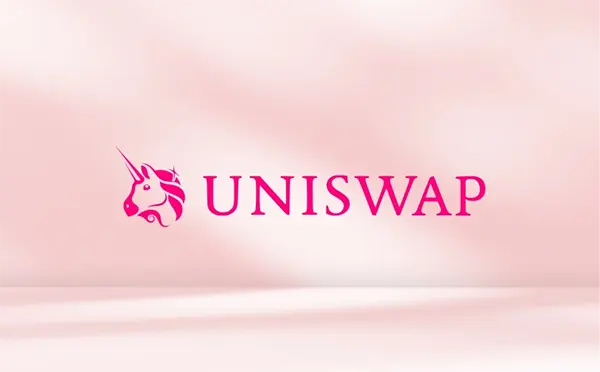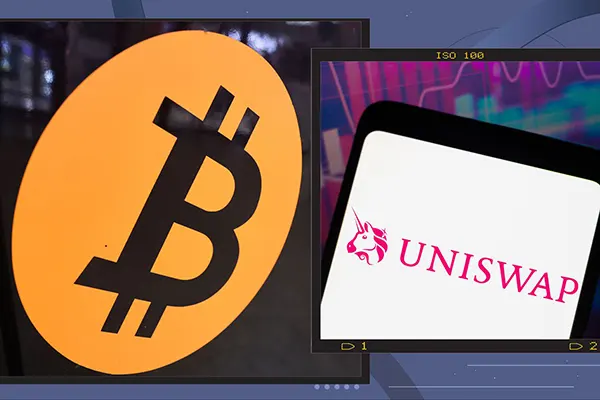Uniswap: How the Ethereum-Based Decentralised Exchange Works

Uniswap is one of the most prominent decentralised exchanges (DEXs) built on the Ethereum blockchain. Since its launch in 2018, it has revolutionised the way users trade cryptocurrencies by eliminating the need for traditional intermediaries. Instead of relying on order books and centralised matching engines, Uniswap uses smart contracts and liquidity pools, providing a fully autonomous and transparent trading environment.
The Mechanism Behind Uniswap’s Liquidity Pools
Uniswap operates through a unique protocol known as an Automated Market Maker (AMM). Rather than matching buy and sell orders like traditional exchanges, Uniswap enables users to trade against a pool of tokens locked in smart contracts. These liquidity pools are funded by other users who earn a portion of the trading fees as a reward for providing liquidity.
The core algorithm that governs Uniswap is the constant product formula: x * y = k. Here, ‘x’ and ‘y’ represent the quantities of two tokens in the pool, and ‘k’ is a constant. This formula ensures that the value of the pool remains balanced and that prices adjust automatically based on supply and demand. This makes front-running and manipulation significantly more difficult compared to traditional markets.
Liquidity providers can deposit equal values of two tokens, such as ETH and USDC, into a pool. In return, they receive LP (Liquidity Provider) tokens representing their share of the pool. When trades occur, a 0.3% fee is applied, which is then distributed among all liquidity providers proportionally. This creates a sustainable incentive model while maintaining decentralisation.
Key Advantages Over Centralised Exchanges
One of the main benefits of Uniswap is that users retain full control over their funds. Since there is no need to deposit assets into a central wallet, the risk of exchange hacks or mismanagement is eliminated. This aligns with the ethos of decentralisation and trustlessness, critical components of blockchain technology.
Moreover, Uniswap operates 24/7 without downtime, governed entirely by code rather than human intervention. This ensures reliability and eliminates geographical or regulatory barriers that might affect centralised platforms. Any ERC-20 token can be listed and traded without approval, encouraging innovation and accessibility for new projects.
Additionally, Uniswap’s open-source nature allows anyone to audit or fork the code. This transparency enhances security and encourages community-driven development. Over the years, this has led to the rise of various forks and alternatives, some with added features like lower fees or enhanced user interfaces.
Recent Developments and Upgrades in 2025
As of February 2025, Uniswap has expanded significantly with the launch of Uniswap v4, bringing major improvements in gas efficiency and customisable liquidity pools. The v4 upgrade introduces the concept of “hooks,” enabling developers to build custom behaviours directly into the pools, such as dynamic fees or on-chain limit orders. This flexibility has opened doors to more sophisticated DeFi strategies.
Another critical feature in v4 is the Singleton contract architecture, which drastically reduces gas costs by consolidating pool contracts. This move aligns with Ethereum’s broader focus on scalability and lower transaction costs, especially after the roll-out of Ethereum’s Danksharding enhancements earlier in 2025.
Uniswap has also integrated with multiple Layer 2 solutions like Optimism and Arbitrum. These integrations significantly lower transaction fees and improve speed for users. As a result, Uniswap’s reach now includes users who were previously priced out of on-chain trading due to high gas fees on Ethereum mainnet.
Governance and Community Involvement
Uniswap’s development is guided by its decentralised autonomous organisation (DAO), where holders of the UNI token can propose and vote on changes. This includes upgrades, fee structures, or treasury fund allocations. In early 2025, the DAO voted to initiate a fee switch experiment, where a portion of trading fees is redirected to UNI holders instead of all going to liquidity providers.
The governance model ensures that Uniswap evolves in line with the community’s vision. UNI token holders have a real stake in shaping the protocol’s future. This empowers the user base, making Uniswap more democratic and adaptable than centralised finance counterparts.
To encourage broader participation, Uniswap’s team has continued to improve its governance interfaces and documentation. This effort helps reduce entry barriers for new contributors, ensuring that decision-making isn’t monopolised by large holders alone.

Security, Risks, and User Experience
Security remains paramount in the DeFi ecosystem. Uniswap’s contracts have undergone multiple audits and have proven resilient against major exploits. Nevertheless, users must remain cautious of impermanent loss—a temporary loss of funds experienced by liquidity providers due to price fluctuations of pooled assets.
Another potential risk is smart contract vulnerabilities. While Uniswap’s core contracts are battle-tested, malicious tokens or phishing frontends can still pose a threat. Users are advised to verify contract addresses and use reputable interfaces like the official Uniswap frontend or trusted aggregators.
In terms of user experience, the platform continues to streamline its interface for both novices and seasoned traders. With wallet integrations like MetaMask, Coinbase Wallet, and WalletConnect, users can quickly connect and swap tokens with minimal friction. Recent updates also include fiat on-ramps and portfolio tracking features, making Uniswap a one-stop DeFi hub.
The Future Outlook of Decentralised Trading
Looking ahead, Uniswap is well-positioned to maintain its leadership in decentralised finance. The combination of technological innovation, community-driven governance, and a commitment to open finance principles makes it a cornerstone of the Ethereum ecosystem. As regulations around the world evolve, Uniswap’s decentralised structure offers resilience against centralised clampdowns.
Developers are actively working on cross-chain interoperability, which may allow Uniswap to facilitate trades across non-Ethereum networks. This would drastically enhance liquidity and user choice, paving the way for a truly borderless DeFi marketplace.
With increasing adoption, scalability improvements, and an engaged user base, Uniswap continues to redefine how financial systems can operate—without central authority, accessible to anyone with an internet connection, and governed by code and community.
